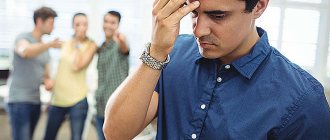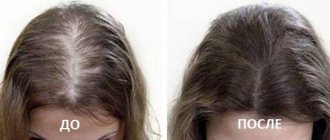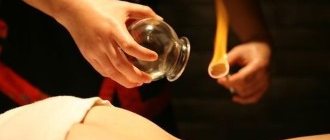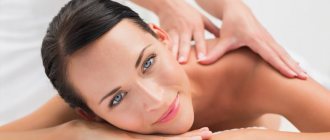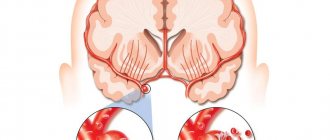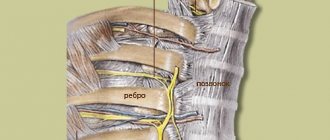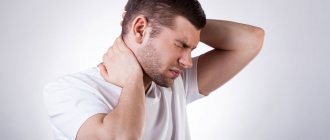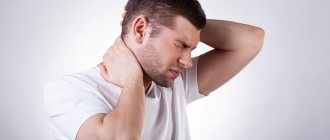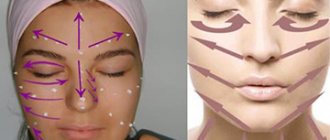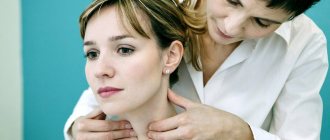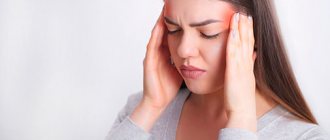Health
Don't believe that acupressure works wonders? Then you should try it and see for yourself.
These techniques are thousands of years old and they really work without any harm or side effects.
It's no secret that our body has amazing abilities: pain and illness go away
, if you act in a certain way on important points.
Those who practice acupuncture have known this for a long time. However, instead of needles, you can use your own fingers, with which you need to press on those same magic points or massage them.
Traditional Chinese Medicine practitioners believe that a person's life energy (or "qi") flows through certain invisible channels
which are called
meridians
. If there are blocks in its path, pain or illness appears.
Research has shown that if you press on specific points, also called acupuncture points, the brain produces natural pain relievers.
– endorphins and can block pain signals transmitted along nerves. Also, with the help of such acupressure you can get rid of insomnia and fatigue and a host of other problems.
So where are these magic points?
and how do you need to influence them in order to relieve unpleasant symptoms, fatigue, get rid of ailments and pain?
There are many such points, but we will show you some of them, which you can influence yourself at home at any convenient time.
Acupressure: how to relieve fatigue after work?
Many people relieve fatigue and stress in not entirely healthy ways, perhaps because they do not know that they can do this with the help of massage
. Massaging the points below will work wonders! Afterwards, you will be able to increase your energy levels and feel much better!
Using your thumb, index or middle finger, massage the following points forcefully for 3 minutes on the left and right:
(1, 2) Using two fingers, massage the point at the base of the skull, about 1 centimeter from the spine.
(3) Massage the depression between the thumb and index finger on both hands in turn
(4) Massage the point shown in the photo, approximately where the bend of the foot begins.
Acupressure for headaches and migraines
Headache
- the most common types of pain that perhaps each of us has experienced. Most often they appear and disappear on their own, but in more rare cases they can be a signal of more serious problems.
The most common type of headache is tension headache.
which appears if we are stressed, very tired or
have been very tense
. It often happens after a hard day at work, after sitting at the computer for a long time, after quarrels and nerves, etc.
To get rid of this type of pain, try massaging the following points for 1 minute:
(1) Third eye point
- a point just above the bridge of the nose, between the eyebrows. Stimulating this point helps increase concentration, sharpens intuition, relieves headaches and even helps eliminate digestive problems!
Apply pressure with varying degrees of force using one or more fingers, finding the most comfortable position for you. Your body will tell you how hard to push.
for greater effect. Press until the headache goes away.
(2) Massage the point between the thumb and index finger:
(3) Massage the points between the second and third toes:
(4) Temple massage:
(5) Massage points located approximately 1 centimeter above the center of the eyebrow:
Who should not massage their feet?
Despite the fact that we are talking about amateur home massage, even this may be contraindicated for some reasons. Primarily for various tumors and inflammatory processes, hernias, as well as in the first trimester of pregnancy.
The following are considered contraindications for any massage:
- skin problems, rashes and acute fungal diseases,
- oncology,
- diabetes,
- serious injuries (fractures, sprains, dislocations),
- disorders of the joints,
- diseases and abnormalities of the cardiovascular system,
- phlebeurysm,
- thrombosis, thrombophlebitis and any blood diseases,
- epilepsy,
- various problems with the thyroid gland,
- pregnancy (especially the first trimester),
- any chronic diseases in the acute stage.
If you have any of these contraindications, you should definitely consult a doctor before starting a course of even non-professional massage.
Acupressure for toothache
Toothache
is also a fairly common type of pain that almost everyone has experienced. The problem lies in the fact that due to poor oral hygiene or other reasons, the teeth begin to deteriorate, which exposes the nerves. Toothache is an important signal that it is time to treat your teeth. It is impossible to endure it for a long time, and if your dentist sees you a little later, do not rush to swallow painkillers! Try to reduce toothache with acupressure on the following points (1 minute each):
(1) To relieve toothache, massage the point just below the wings of the nose on both sides.
(2) Massage the point between the thumb and index finger:
(3) Clench your teeth tightly and locate the protruding oblique muscle in your cheekbones. Tighten these muscles and find the point on the most protruding part. Massage this point:
(4) Massage the points between the second and third toes:
(5) Massage the point below the cheekbones:
What is a venous outflow disorder?
First of all, let's understand the anatomy. Imagine a spine. Veins run next to it, through which blood should flow freely from the head down. If the vertebrae are displaced, then the veins can be pinched, deformed, and because of this their capacity is reduced. Blood accumulates in the posterior cranial fossa.
With normal intracranial pressure, there is no outflow of blood through the compressed vessels. In order for the outflow to be restored, the blood must flow with greater pressure, that is, the pressure must increase. We all know that increasing blood pressure is not beneficial for the body, to put it mildly, and here it is a necessary measure to restore blood circulation, otherwise more serious problems will arise.
In the long term, stagnation of blood and impaired circulation in the brain are fraught with many bad consequences, but there is no need to be afraid. The human body is excellent at recovering on its own, plus it informs in advance about possible problems with unpleasant and even painful sensations. Therefore, you need to listen to your body and simply help it be healthy, which is not difficult to do.
After an increase in pressure, a sharp outflow occurs through the posterior or jugular veins. Changes in the condition of the jugular veins are easier to see on an ultrasound than changes in the vessels near the spine, on the back of the neck.
Helpful advice
When you go for an ultrasound, be sure to ask to look at the jugular veins. If they write to you that they are dilated, this is an accurate sign of venous stagnation and circulatory disorders in the brain.
Reference. It is more difficult to see a similar sign of a disorder in the spine. Therefore, it may be that the problem is already there, but it is not yet visible when examining the back of the neck.
The jugular veins dilate and lose elasticity when large volumes of blood are dumped through them. As a result, blood circulation worsens even more, and the body signals this with pain.
Acupressure for ear pain
Children most often suffer from ear pain, but adults can also have “blown out” ears.
If you have ever experienced an earache, you will never forget it: it is a very unpleasant sharp or aching pain somewhere inside the head.
Ear pain can occur for various reasons. The most common causes include
infections, side effects of colds and flu, sudden changes in blood pressure (for example, when flying on an airplane); water getting into the ears and so on.
To get rid of ear pain or at least relieve it, try massaging the following points for 1 minute each:
(1) Massage the point between the thumb and index finger:
(2) Massage the point near the tragus of the auricle:
(3) Massage a point slightly above the tragus of the auricle:
(4) Massage the point near the outer corners of the eyes:
Acupressure for runny nose and nasal congestion
Runny nose
– a problem for everyone, especially in the off-season. If your runny nose has not progressed to chronic stages, try massaging the points listed below to relieve symptoms. It is best to perform a light massage of these points in turn on both sides for 1 minute.
(1) If you suffer from a runny nose, we advise you to try massaging the points located just below the base of the eyebrows. By the way, this massage also helps improve vision:
(2) Third eye point massage:
(3) Massage the points just below the wings of the nose:
(4) Massage the point near the outer corners of the eyes:
(5) Massage the point just above the earlobe:
Acupuncture points on the human head.
Acupuncture points on the human face, neck and head
Guru
Acupuncture points The main points are located along the meridians, each of them has its own name and is responsible for the activity of a specific organ.
Points that harmonize the functioning of organs and systems are located closer to the beginning and end of the meridians. On each meridian there is one stimulating point, by pressing which you can activate the body’s reserve forces to fight the disease. The meridians also have calming points that balance the activity of the nervous system, and points that directly correspond to a specific organ. Without the foundations of Chinese philosophy, it is difficult to master acupuncture practice, but understanding them is a task for specialists who have decided to fully master the art of acupuncture. In order to help yourself independently using acupressure (acupressure), you just need to know that the disease disrupts the connection of the organ with the point responsible for it. Restoring this connection and normalizing the functioning of the organ is achieved through physical impact on the acupuncture point.
Diagnostic representations on the human face, head and neck.
Acupuncture points
Projection zones of internal organs: 1. Rectum. 2. Sigmoid colon. 3. Liver. 4. Small intestine. 5. Descending part of the colon. 6. Left adrenal gland. 7. Area of the left kidney pelvis. 8. Upper pole of the left kidney. 9. Left lobe of the liver. 10. Body of the gallbladder, spleen. 11. Left part of the transverse colon. 12. Pancreas. 13. Biliary ducts of the liver and gallbladder. 14. Left kidney. 15. Cardiac pathologies. 16. Ureter of the left kidney. 17. Left lobe of the liver. 18. Left mammary gland. 19. Left lung. 20. Cardiac disorders (more often - rhythm disturbances). 21. Bronchus of the left lung. 22. Diaphragm, costal arch. 23. Lesser curvature of the stomach. 24. Duodenal bulb, pyloric section of the stomach. 25. Adrenal gland of the left kidney. 26. Left inguinal fold and area of the pupart ligament. 27. Left ovary in women, left testicle in men. 28 Left mammary gland. 29. Pubic symphysis. 30. Left kidney. 31. Greater curvature of the stomach. 32. Left appendage with ovary, left lobe of prostate gland with testicle. 33. Bladder. 34. Pelvis of the left kidney. 35. Pancreas. 36. Left lobe of the thyroid gland. 37. Left ureter. 38. and 41. Pyloric section of the stomach. 39. Uterus, prostate lobes, perineum. 40. Right mammary gland. 41. and 38. Pyloric section of the stomach. 42. Right ureter. 43. Gallbladder. 44. Right lobe of the thyroid gland. 45. Pelvis of the right kidney. 46. Gynecology, right appendage with ovary, right lobe of the prostate gland with testicle. 47. Lesser curvature of the stomach. 48. Right kidney. 49. Right ovary in women, right testicle in men. 50. Lymphatic system of the iliac region. 51. Adrenal gland of the right kidney. 52. Small intestine. 53. Greater curvature of the stomach. 54. Hormonal system. 55. Signs of scleroderma. 56. Small intestine. 57. Xiphoid process. 58. Greater curvature of the stomach. 59. Lesser curvature of the stomach. 60. Bladder, ureter of the right kidney. 61. Bronchius of the right lung. 62. Right mammary gland. 63. Right lobe of the liver. 64. Ureter of the right kidney. 65. Right lung. 66. Right kidney. 67. Congestion in the renal structures. 68. Right part of the transverse colon. 69. Kidney infection. 70. Right kidney. 71. Body of the gallbladder with ducts. 72. Right lobe of the liver. 73. Pelvis of the right kidney. 74. Right adrenal gland. 75. Ascending colon (ileocecal angle). 76. Transverse colon. 77. Appendix. 79. Bladder. 80. Uterus in women, genital organ in men.
Acupressure for shoulder pain
The shoulder joints are the most mobile joints of the whole body, so injuries, sprains, and so on often occur in this part of the body. Most problems in this area are associated with inflammation of the tendons
, muscle strains, bruises, glenohumeral periarthritis and so on. The pain limits mobility, but it can be relieved by massaging certain points for 1 minute:
(1) Massage the point between the thumb and index finger:
(2) If you bend your arm at the elbow and press it to your body, the point that needs to be massaged will be located just above the bend:
(3) Massage the points between the second and third toes:
(4) Massage points located on the back of the shoulder just above the armpits:
(5) Massage points located approximately in the center of the shoulders from above.
Acupressure for back pain
Most of us now lead a sedentary lifestyle
and move little, so the problem of back pain is a very common phenomenon. Important causes of pain in this area are muscle tension and spasms, vertebral displacement and serious illnesses. This type of pain can be relieved by massaging the following points for 1 minute on each side:
(1) Massage the point between the thumb and index finger:
(2) Massage the points between the second and third toes:
(3) Massage the points that are located on the back, at the level where your navel is located, but approximately 2 fingers away from the spine:
(4) Massage the points located below the points (3), approximately 2 fingers apart:
(5) Massage points located approximately in the center of the thigh under the buttocks:
(6) Massage the points located in the center of the knee bend on the back side:
